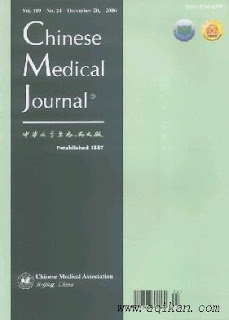Made in China Doctors: Chinese Medical Institutions are conducting an MBBS program in English exclusively for foreign students. Cheap tuition fees and easy admissi...
Chinese Medical Journal
I am in the Editorial Board of CMJ. Manuscripts can be submitted online. A decision on a manuscript is given promptly.
Impact factor: 0.901 (2012)
Journal Website: Please Click
To submit manuscripts in CMJ: Please Click HERE
My Wikipedia article on CMJ: Please Click HERE
Doctors in Gram Bangla
Journal Club for Undergraduate Students
Journal clubs have been used as a teaching format in academic medicine for over a century. The aim is to involve undergraduate medical students in critical appreciation of scientific literature. Students become familiar with research and develop a better understanding of epidemiology and biostatistics.
A Journal club is made of students who meet regularly to discuss critically a published article of common interest. The article is usually written by researchers and clinicians over a defined topic in any field of medicine. Club activities are formalized. Meetings are held at regular intervals which should fit conveniently into the teaching schedule. A student committee is responsible for overseeing club activities and students voluntarily suggest articles relevant to their studies. A group of students would present the selected article and critically discuss its content. Presentation by students is compulsory and students are given time to prepare for their presentation. The article is made known to all in advance. To optimize participation credit is given for attendance.
According to a standard agenda, on the day of meeting the presentation is made orally in English followed by queries which often generate a lively debate. A guest faculty who is an expert on the concerned topic is often invited to stimulate the discussion. A faculty member acts as the mentor and is responsible for assessing and suggesting improvements in club activities.
Students get an opportunity to present scientific papers orally to their peers and develop their debating skills. A well organized Journal Club can generate greater interest toward advanced learning among students.
Ref: Journal club at a Chinese university for international medical students
Pilot Studies
Pilot
studies, synonymous with feasibility studies are carried out in smaller scales
intended to guide the planning of a large-scale investigation (Thabane et al.
2010). It can provide information about the best research process and pre-test
a particular research instrument like a questionnaire. Occasionally they give
an idea about likely outcomes (van Teijlingen & Hundley 2001). A pilot
study will resemble the main study in many respects and focus on the processes
of the main study. In what is referred as an “internal pilot” data from the
pilot phase contribute to the final analysis. In an “external pilot” data from
the pilot study is not analyzed with the final data set (Lancaster, Dodd
& Williamson 2004). Pilot studies are often not well designed without
any statistical foundation and reporting of such data may lead to making an
inaccurate prediction or assumption. Thus data from a pilot study alone may not
be sufficient enough for a conclusion. Furthermore, if there are any problems
with the research methodology subsequent modifications in the research process
are made for the actual study. This would make the obtained data in the pilot
flawed or inaccurate. Therefore such data should be included with the actual
data only after careful consideration. Every attempt should be made to publish
the results of a pilot study with proper indication that it is from a “pilot”
study. Reporting of information obtained from the pilot into the main
experiment will help design future experiments and yet rarely are they
documented. They are most commonly reported in research publications to justify
the overall research design or the validity and reliability of research tools
such as a questionnaire. Reporting of the challenges faced in pilot studies
might help others avoid similar pitfalls and mistakes, and thus save valuable
resources (Lancaster, Dodd & Williamson 2004). A pilot study that shows
that the main study is not feasible is not a failed study. In fact as mentioned
by Thabane et al. (2010), such a study is successful because wasting valuable
resources on a study destined to fail has been avoided. The inclusion of pilot
study participants in the main research may create bias. Pilot study
participants have already been exposed to the intervention and therefore are
more likely to respond differently from those who have not previously
experienced it.
Subscribe to:
Comments (Atom)
